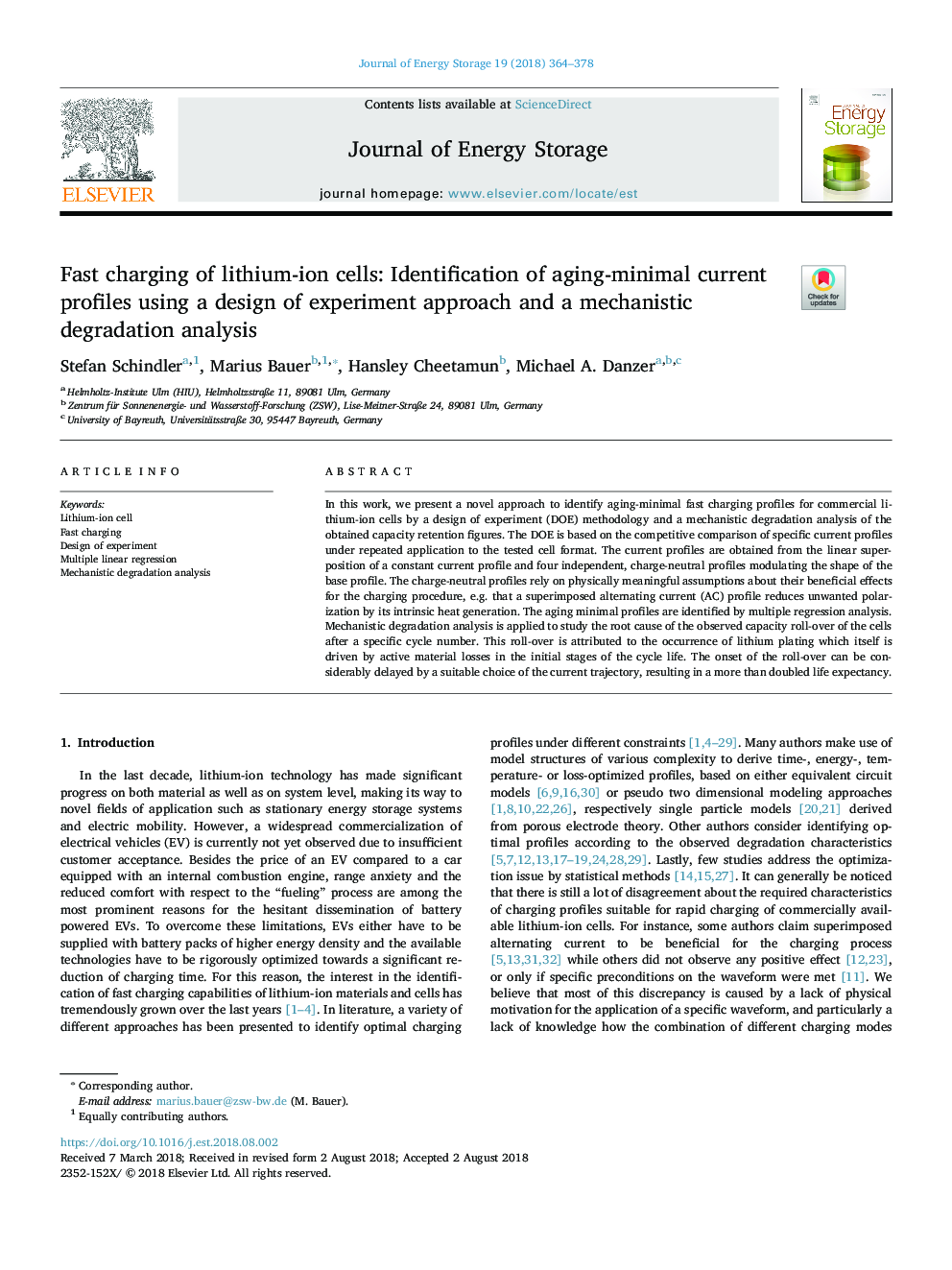| Article ID | Journal | Published Year | Pages | File Type |
|---|---|---|---|---|
| 11425374 | Journal of Energy Storage | 2018 | 15 Pages |
Abstract
In this work, we present a novel approach to identify aging-minimal fast charging profiles for commercial lithium-ion cells by a design of experiment (DOE) methodology and a mechanistic degradation analysis of the obtained capacity retention figures. The DOE is based on the competitive comparison of specific current profiles under repeated application to the tested cell format. The current profiles are obtained from the linear superposition of a constant current profile and four independent, charge-neutral profiles modulating the shape of the base profile. The charge-neutral profiles rely on physically meaningful assumptions about their beneficial effects for the charging procedure, e.g. that a superimposed alternating current (AC) profile reduces unwanted polarization by its intrinsic heat generation. The aging minimal profiles are identified by multiple regression analysis. Mechanistic degradation analysis is applied to study the root cause of the observed capacity roll-over of the cells after a specific cycle number. This roll-over is attributed to the occurrence of lithium plating which itself is driven by active material losses in the initial stages of the cycle life. The onset of the roll-over can be considerably delayed by a suitable choice of the current trajectory, resulting in a more than doubled life expectancy.
Related Topics
Physical Sciences and Engineering
Energy
Energy (General)
Authors
Stefan Schindler, Marius Bauer, Hansley Cheetamun, Michael A. Danzer,
